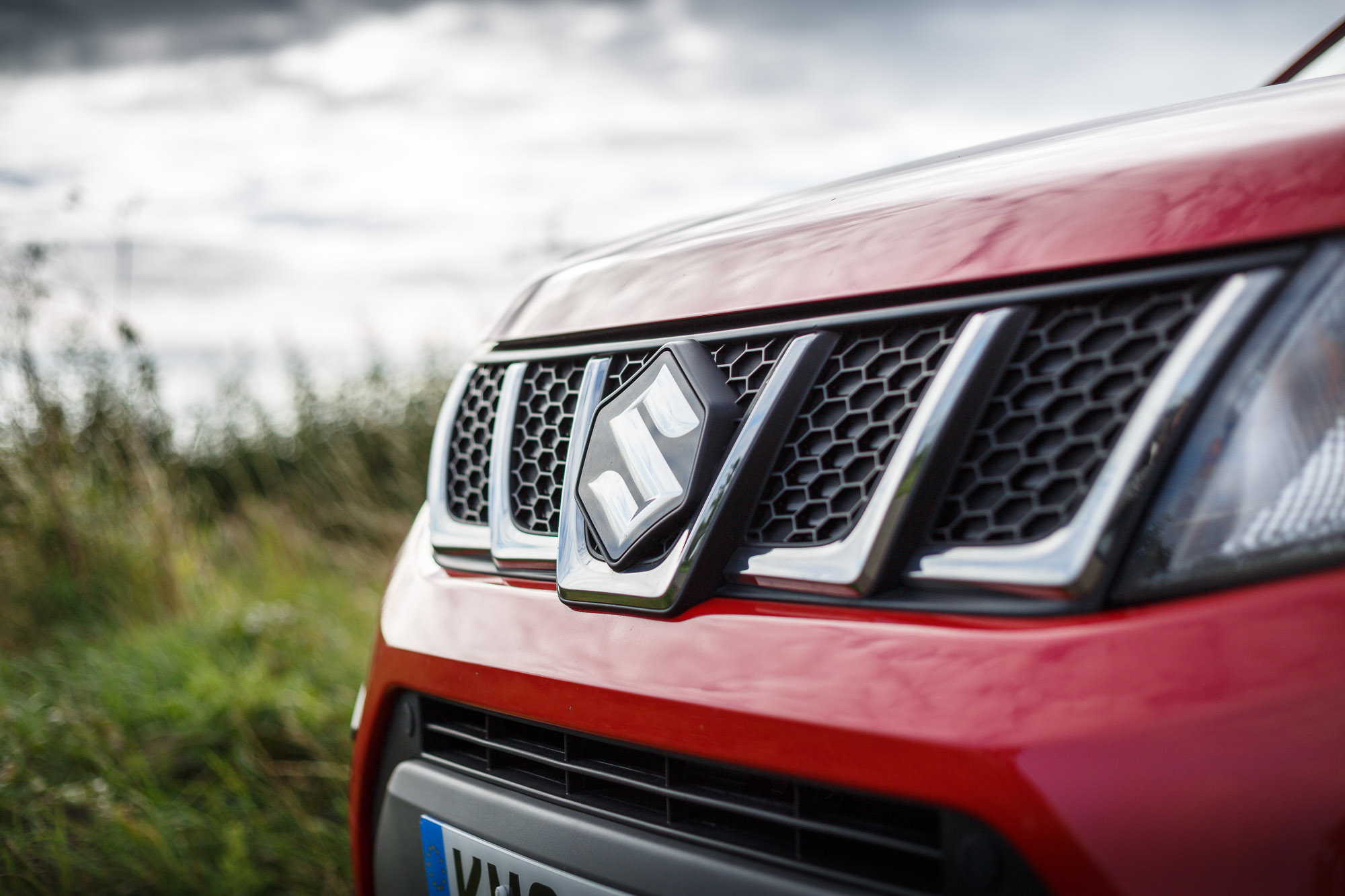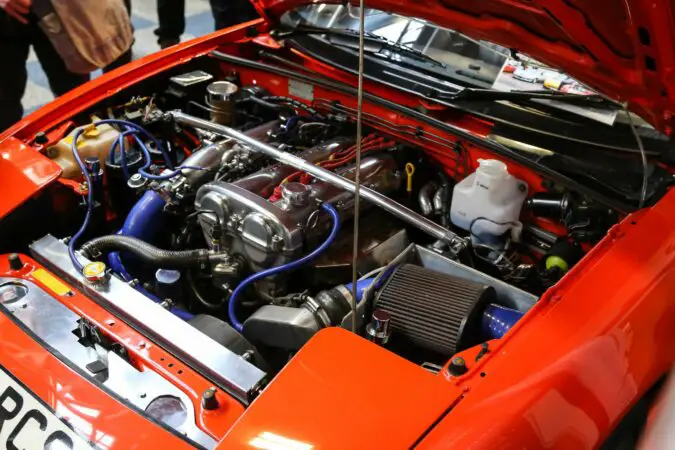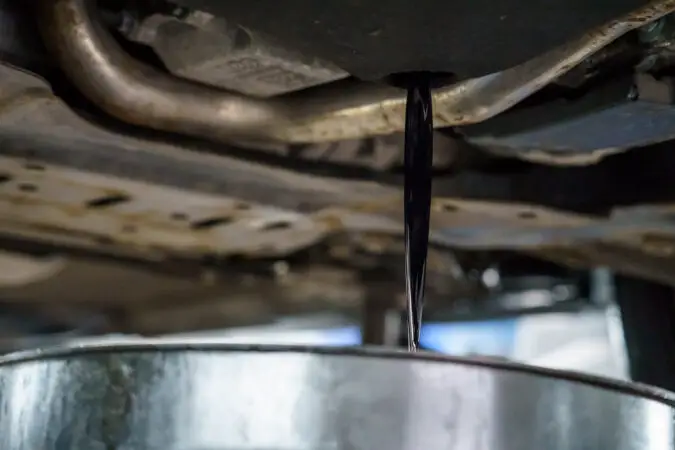When thinking of small Japanese roadsters from the ’90s, most people will think of the Mazda MX-5 Miata. And rightly so, it’s an excellent car and is the best-selling roadster of all time. However, there are plenty of other small roadsters that have come out of Japan. One of which is the Suzuki Cappuccino.
The Cappuccino was never sold in the US, only available in Japan and certain European markets. However, this once forbidden coffee on wheels is now over 25 years old, meaning you can legally import it to the US without having to meet DOT standards.
The question now is do you actually want to do that? Should you import this little roadster? This post will discuss everything about the Suzuki Cappuccino. And at the end, we’ll give you a verdict on whether or not you should get one of these. Here’s our table of contents to help you navigate:
Suzuki Cappuccino History & Spec
The Cappuccino is so small that it’s classified as a Kei car. If you didn’t know, Kei car translates to “light car”, and is the smallest class of car in Japan’s car category. Comparable to Europe’s microcar category. This class of car has lower tax and insurance rates in Japan and was meant as a way for affordable car ownership in Japan.
The Cappuccino measures 129.7 inches long and 54.9 inches wide. This makes it significantly smaller than the legendary Miata. The first-generation Miata measures 155.5 inches long and 65.9 inches wide, which is around 25.8 inches longer and 11 inches wider.
This car was produced from 1991 to 1997. The car was also available for certain European markets, but as mentioned, none was officially sold in the US. Here’s a closer look at its technical specs:
Technical Specs
Since it’s so small, the Cappuccino doesn’t need to have a big engine. Additionally, there’s a limit on how big the engine could be for Kei cars. At the time, the limit was 660cc. Any more than that, then the car can’t be classified as a Kei car, no matter how small the dimensions were.
It has a 657cc three-cylinder turbocharged engine, making a dizzying 63 horsepower in its most powerful variant. Earlier versions came with the F6A engine, and the K6A engine was introduced later on in its production.
Both engines are Dual Overhead Cam (DOHC) with 12 valves. The difference is that the later K6A engine is lighter and uses a timing chain rather than a timing belt, which should make it more reliable. Additionally, Suzuki claims it makes a bit more torque, although we can’t find any information on how much.
The Cappuccino came as either a 5-speed manual or a 3-speed automatic, and we’re sure you’d want the former for a small roadster such as this. Now, the engine doesn’t sound like it makes a lot of power, but it weighs a mere 1,600lbs (curb weight), well over 400lbs lighter than even the first-generation Miata. Here’s a more complete spec:
- Engine: 657cc three-cylinder turbocharged engine.
- Power output: 65 horsepower in the most powerful variant.
- Transmission: 5-speed manual or 3-speed automatic, rear-wheel drive.
- Dimensions: 129.7 x 54.9 inches (length x width), 81.1 inches (wheelbase length).
- Weight: 1,598lbs (curb weight, without fuel, other fluids, and optional equipment).
Features
You wouldn’t expect such a small car to have a lot of features, and, well, it doesn’t. But there are certain features that you might be interested in, although it’s not available in all models.
For example, the higher-spec ‘BA’ variant came with a driver airbag, ABS on all four wheels, power door mirrors, and some models even had a limited-slip differential. Note that this was only available from 1995 to 1997.
The main feature is of course the removable roof, giving you unlimited headspace and allowing you to become one with nature during your spirited drives through those mountain roads. Making you feel more awake than, well, a good cup of cappuccino.
Unlike the Miata, which has a fabric roof that you manually fold down, the Cappuccino has removable roof panels. You undo some clips, take them off, and then put them into the trunk. Although the trunk is so small you probably won’t be able to fit anything else in there. Best not do your grocery shopping with this car.
This turns the Cappuccino into a Targa, which is a type of convertible roof that has a full-width panel and roll bar just behind the driver. Fun fact: Porsche owns the trademark name for Targa, hence why no other carmaker uses the Targa name.
Anyway, you can then fold down the panel behind—manually, of course. And then the Cappuccino becomes a true convertible, giving you even more headroom. However, we kind of like the Targa look and it even kind of looks like a Porsche 911 Targa. Well, at a glance anyway. Watch the video above from Doug Demuro to see how the roof works.
That’s about all of the features. So, how does the car drive then?
What Is It Like To Drive A Suzuki Cappuccino?
As you’d expect from a car like this, the Cappuccino handles like a charm. A low-riding sports car that’s the size of a shopping cart and lighter than a gallon of milk? Few cars will handle quite as fun as the Cappuccino.
AutoExpress notes the Cappuccino “feels sharp and precise” and that “the narrow-body allows you to pick the desired line within your lane— and ability all but lost in wide, more modern machinery.” That’s basically the long way of saying that it handles brilliantly, and few modern cars can match.
The Doug Demuro video should give you an idea of how it drives. However, here’s another one from Regular Car Reviews. Their reviews are a little, shall we say, unconventional, but we like their reviews:
Since it has such a small engine, don’t expect the Cappuccino to be winning any drag race. As mentioned, it makes at most 65 horsepower with the more powerful K6A engine. And according to Road & Track, a good tune might get you 90 horsepower at most.
That’s a pretty significant increase, but still, nowhere near enough to win a drag race unless you’re racing a milk truck. However, that’s not the point of this car. The point of this car was to be so small that it meets Kei car regulations, and be a small roadster that you can enjoy on mountain roads.
If you value horsepower above all else, then this is not the car for you. But if you value handling, and you like to take corners in, shall we say, a spirited manner, few cars will be as good as the Cappuccino.
Modifications For The Suzuki Cappuccino
You might be wondering, what sort of modification can you do to this little sports car? Can you make it faster? If you watched the video above from Regular Car Reviews, you’ll notice that there are minor modifications done to the car.
However, you can go a bit further and add more shots of espresso to your Cappuccino to keep you awake. Take a look:
The particular example above has a myriad of cosmetic modifications, including front bumpers, widebody wheel arches, and a spoiler. Additionally, there’s a set of BC coilovers to help improve the car’s handling.
Of course, there are engine upgrades as well. Replacing the original turbo with an aftermarket Garrett GT12 is probably the most impactful upgrade to the engine. The owner didn’t specify how much more power the turbo provides, but the GT12 can add anywhere between 50 – 130 horsepower.
While the Cappuccino is not quite as common as a Miata, there are still quite a lot of aftermarket products to choose from and plenty of tuning potential. Whether you want cosmetic or performance upgrades, there are plenty of aftermarket parts available for it.
Buying A Suzuki Cappuccino
So, at this point, you might be tempted to buy one. We’ll give our verdict later on, but how can you buy one? How much will it cost? If you don’t want to deal with the hassle of importing a car, many other enthusiasts have done the importing for you and there are several units for sale in the US.
Duncan Imports in Christiansburg, Virginia has several listings in AutoTrader. Price? The ones with less than 25,000 miles costs around $25,000. Meanwhile, there are a couple of them with around 45,000 – 65,000 miles, these cost between $14,000 – $17,000. If you think that’s a lot of money, that’s because it is.
For comparison, we found a 1995 Miata with just 16,000 miles on CarGurus. It’s in pristine condition, with an asking price of $21,800. It’s also a lot of money, but the Cappuccino doesn’t have quite the same pedigree and heritage as the Miata.
We should note that buying from import dealers tends to be more expensive, and you may get a better deal from an auction. Bring A Trailer, which is a renowned car auction site, sold a Cappuccino last year for $8,200. The car had plenty of cosmetic and performance upgrades, but the total mileage of the car is unknown.
On average, you can expect the Cappuccino to cost between $12,000 and $17,000. However, low mileage and pristine specimens will fetch upwards of $26,000. Meanwhile, higher-mileage ones sold personally by the owner cost between $5,800 to $9,000.
Should I Import One Instead?
With the Cappuccino demanding such high prices, should you import one instead? You can save money if you’re able to find a specimen that costs significantly less. However, even in Japan, the Cappuccino can still demand a high price tag.
If you want to import from Japan, try using Goo-net Exchange. They have a database of cars currently on sale in Japan. And the cheapest one we could find was a 1993 base model with around 110,000 miles on the clock, and an asking price of a mere $5,199.
There are also several lower mileage specimens with around 30,000 miles on the clock, and they cost around $15,000. That’s quite high, but there are hundreds more of them that cost less. However, note you’ll need to pay a 2.5% duty to Customs and Border Protection (CBP), and of course, the shipping cost.
The video above is a useful guide on what you need to do to import a car from Japan. As mentioned, you may be able to find some cheap cars and save money. However, you’ll need to pay for shipping, duty costs, and the importer or broker fees as well. Additionally, there is paperwork that you will need to complete.
If you want to know more about shipping cars to the US, we recommend reading Doug Demuro’s article on Jalopnik about his personal experience importing a Nissan Skyline to the US. He states that you need to prepare at least $1,200 for shipping alone, and a few more hundred dollars for inspections and paperwork.
Suzuki Cappuccino Common Problems
We’re sure you’re tempted, but don’t go out and buy one just yet. You might be interested in knowing some of the common problems the Cappuccino has:
1. Weak Transmission Synchro
Modern manual transmissions use synchronizes to allow for smooth gear changes. We won’t get into the detail, but in the past, you need to do something called double-clutching to change gears (if you want to learn how to double clutch).
This process involves pressing the clutch pedal and taking the shifter into neutral. Let go of the clutch, rev the engine a tiny bit, clutch in, then engage the desired gear. It’s a hassle, and thanks to synchros, we don’t need to do this anymore.
The synchro in the manual transmission of the Cappuccino is known to be weak. When they fail, expect difficulties in changing gears. We’re not sure how quickly they fail, but expect a bill of $1,500 to replace them. That being said, the Cappuccino is known to have a quirk where second gear is particularly difficult to engage when it’s still cold.
2. Brake Piston Problems
Disc brakes use one or more pistons to move the caliper so that the brake pads come into contact with the discs and slow the car down. Some reports say that the pistons in the Cappuccino are prone to leaking and sticking.
Leaking pistons means it will leak out the brake fluid, which will reduce performance. A sticking piston means that the piston isn’t returning to its original state, resulting in the brakes being constantly engaged. This will induce excess wear, and wear out your pads and discs much quicker.
Repairs for this range anywhere between $200 – $600 depending on how many brake units are experiencing the problem. If you need to replace the pistons, expect the repairs to be on the higher end of the estimate.
3. Frequent Oil Change
This isn’t a problem per se, but it’s worth noting that the Cappuccino requires an oil change every 3,000 miles. Those of you that have had experience with old cars are probably familiar with this, as older cars tend to require servicing more often.
However, for those unfamiliar, it’s worth noting that you’ll need to service the car more often than you normally would with modern cars. Most modern cars can go at least 5,000 miles before requiring an oil change, and cars with synthetic oil can go as far as 10,000 miles between oil changes.
Thankfully, there don’t seem to be too many issues with the engine. Even the turbos seem reliable enough. Although that’s hardly a surprise considering this is a small Japanese engine that’s about as simple as a child’s coloring book.
4. Watch Out For Rust
This isn’t a problem unique to the Cappuccino, as most cars of this age will experience rust at this point. But it’s good to keep an eye out, and if you’re buying from a dealer rather than importing, check the bottom of the car for rust.
Rust is like cancer, once it appears, it’ll spread very quickly unless you treat it. And treating it early on will be easier and cheaper. A good rule of thumb is to see if the rust easily comes off just by touching it. If it does, then run like Forrest Gump. Check out our guide to rust repair costs to learn more.
Suzuki Cappuccino FAQ
The Cappuccino is an intriguing car and we’re sure you have plenty more questions about it. Here are some answers you might find useful:
How Fast Is A Suzuki Cappuccino?
As mentioned, the Suzuki Cappuccino has a 660cc engine making 63 horsepower in its most powerful version. This translates to a 0-60mph time of 8.9 seconds, which is decent even by modern standards. And a top speed of 93mph. It’s not bad, to be honest.
What Engines Fit In A Suzuki Cappuccino?
Thinking of doing an engine swap? Don’t expect to be able to fit in a Toyota 2JZ or a Chevy LS in such a small frame. However, some people have put the engine from the Suzuki Hayabusa superbike into the Cappuccino.
There’s also a rotary swap, which is no surprise since rotary engines are quite small. Not a lot of options, but if you want to do an engine swap, you can. We probably won’t bother though.
How Much Does It Cost To Import A Suzuki Cappuccino?
Expect to pay somewhere around $2,000 – $3,500 to import a car from Japan into the United States, not including the cost of the car itself. If you’re able to find a specimen that you’re happy with in the States, and it doesn’t cost much more than the estimate of shipping one from abroad, you’re probably better off just buying the one already in the States.
It’ll save you the headache of shipping and dealing with paperwork. Additionally, you can inspect the car and see for yourself if it’s in good condition. If you buy from abroad, you’re going to have to take the word of the seller or the broker.
What Are The Suzuki Cappuccino’s Rivals?
The Cappuccino has two notable rivals, the Honda Beat and the Mazda Autozam AZ-1. Both are Kei cars with similarly small engines under 660cc. The main difference is that both of these cars are mid-engine rear-wheel drive, unlike the Cappuccino’s front-engine rear-wheel-drive layout.
Both of them are worth a look, and if you want a head-turner, definitely consider the Mazda. We think it looks like a tiny Ford RS200, and it will turn heads no matter where you go. If you like the attention, the Mazda definitely stands out.
However, note the Mazda Autozam easily fetch a price of over $20,000 at auctions. One unit, in particular, that was reviewed by Doug Demuro was sold for $34,000 at Bring A Trailer. So, prepare to shell out quite a lot of money for the Mazda.
Meanwhile, the Honda Beat costs around the same price as the Cappuccino. Both cars are excellent, although Regular Car Reviews noted that the Beat has a slightly better transmission shifter feel. Additionally, that mid-engine layout makes it more unique.
Will Suzuki Make A Modern Cappuccino?
No. First of all, there are reduced incentives now for owning Kei cars in Japan. Therefore, most people won’t buy a Kei car unless they absolutely have to. As a result, most manufacturers won’t bother in making sporty Kei cars such as the Cappuccino.
Secondly, the sports car market is declining in recent years. Most likely due to the rise of sporty SUVs, such as the Porsche Macan. These cars provide the performance and similar excitement as traditional sports cars, but with more practicality and taller ride height making them more suitable in less than ideal road conditions.
This means carmakers have fewer incentives in making sports cars. What’s the point of making a car that you can’t sell and won’t profit from? So, don’t expect a modern iteration of this classic Kei sports car.
Is The Suzuki Cappuccino Worth It? The Verdict
So, is this tiny sports car from the ’90s worth your money and your time? You probably realize that we have been overly positive about this car, and that’s because we enjoy cars that handle well such as this. We think Regular Car Reviews put it best: “a Cappuccino is for someone seeking their own cornering nirvana.”
As in, this is a car for those who enjoy driving. A car for those who value handling and driving excitement above all else. The Cappuccino has an understated look, and if anything, it looks like a Miata to undiscerning eyes.
You won’t be turning heads with this unless you’re at a car show. And you won’t be winning drag races. But the Cappuccino’s nimble handling is a sensation that few modern cars can provide.




